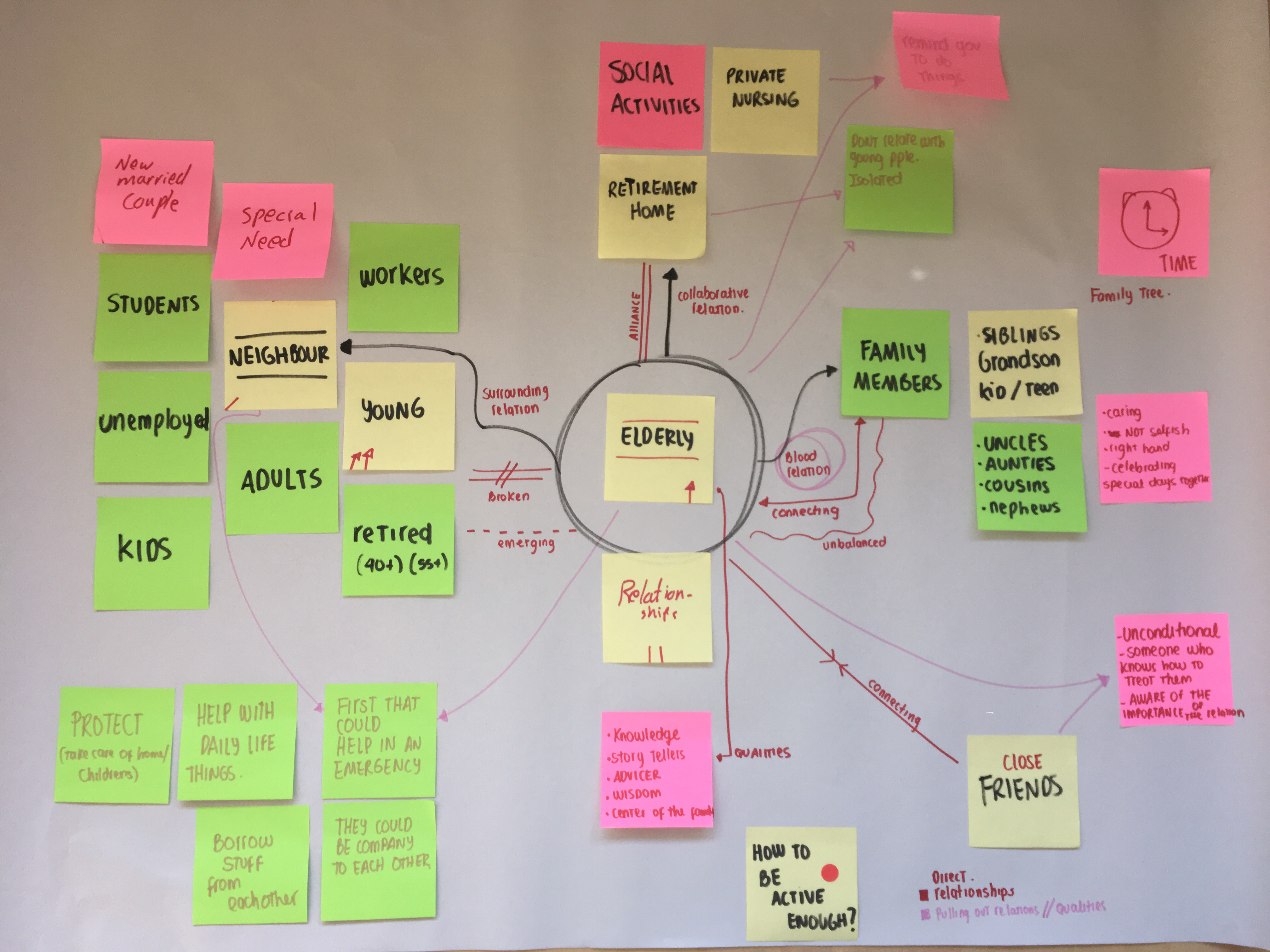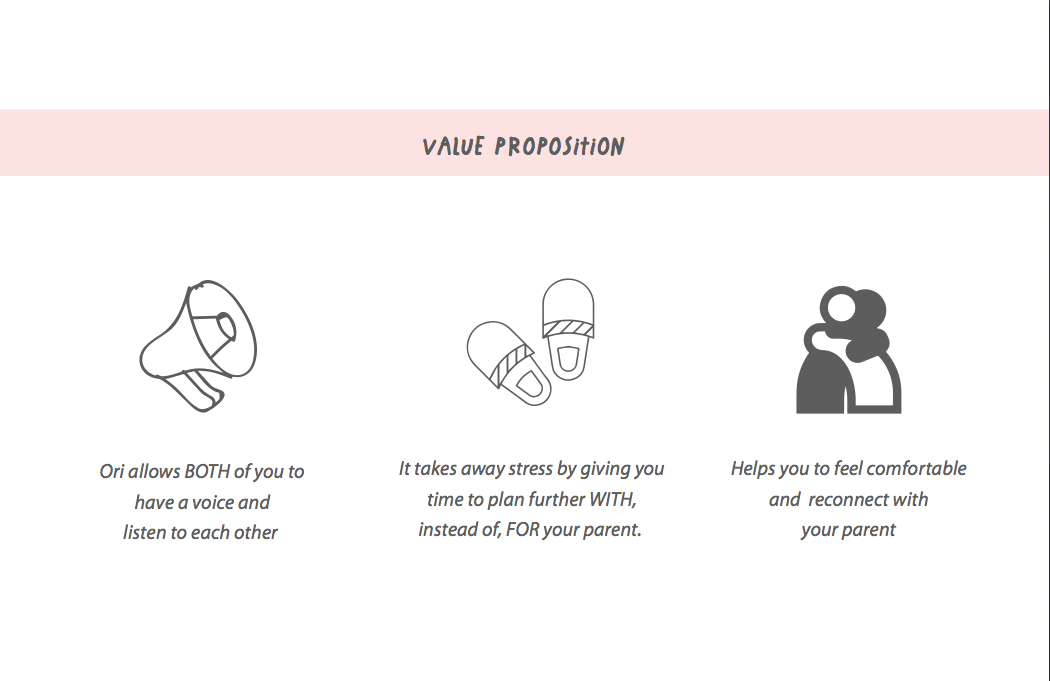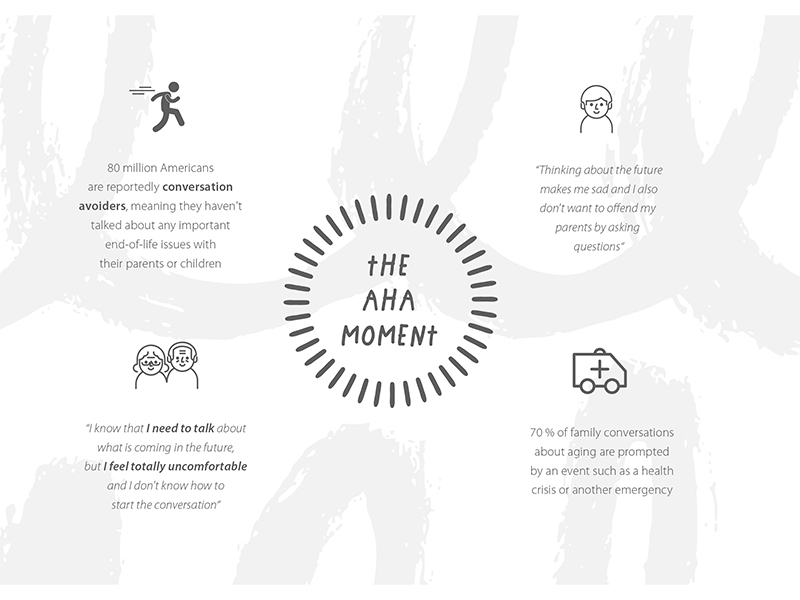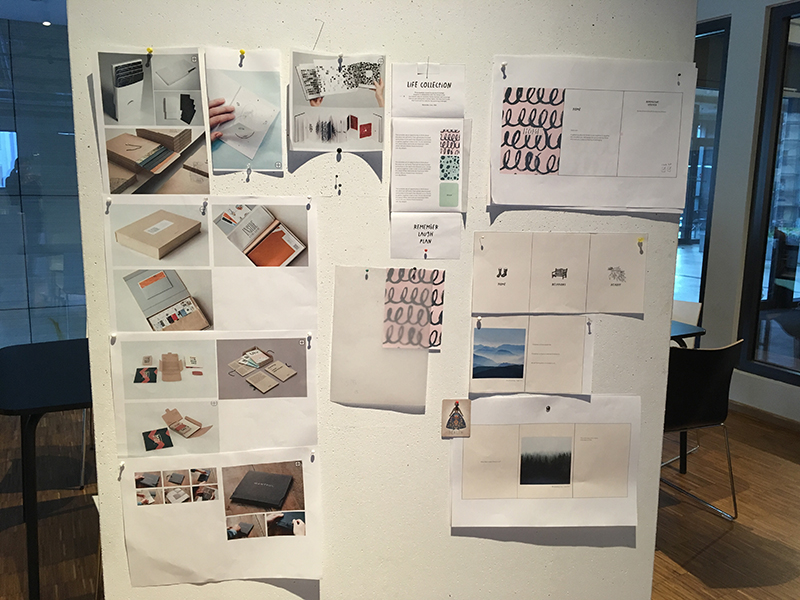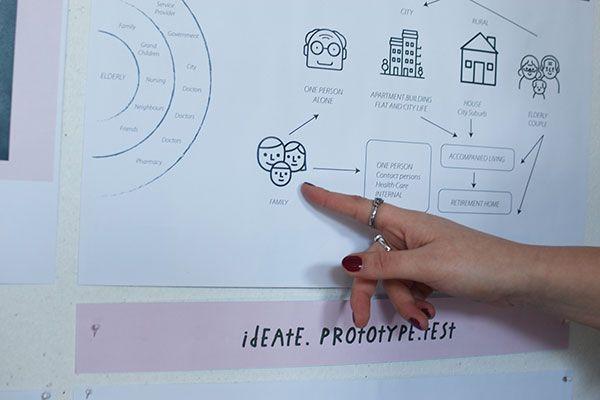Social Innovation
Ori: The best way to predict the future is to create it
Challenge
According to the open book of social innovation from Young foundation 2012, social innovation is defined as new ideas (products, services, and models) that simultaneously meet social needs and create new social relationships or collaborations. In other words, they are innovations that are both good for society and enhance society’s capacity to act.
Our challenge for this project was to create an asymmetric game to improve the quality of life for elderly people who have to deal with physical and psychological decline. We decided to work with a vulnerable population to challenge our design abilities. We saw this project as an opportunity to apply design for the greater good.
Approach
Desk research and cultural probes
One of my biggest passions in design is the process of getting information from field research. I am passionate about the tools Design Thinking allows me to create in order to understand my user. For this project, I had the opportunity to design a Cultural Probe to understand different aspects of the life of an elderly person.
The probe is divided into sections with different activities that allowed us to understand the relationship that elderlies have with their relatives. In the probe, we approached the topic of aging in different cultures. We wanted to understand the meaning and value of age, as well as the role seniors have to play within their families. We asked about interaction and communication challenges and addressed personal issues.
The probe was filled out by 5 elderlies between 60 and 80 years old and our aim was to gather qualitative research data.
Analysis
For the analysis of the information, we used the recap method and created a stakeholder map to have an overview of the project. This way of mapping information was indispensable to discover new connections between elements of the whole system.
With this information mapped we decided to make strategic decisions and reduce our project scope. We framed a POV (Point Of View) that helped us to redefine the initial challenge:
Reconnect elderly people with their family members in a common platform which allow them to start a conversation to keep traditions alive.
We discuss and share our approach with our users. Then, our AHA moment finally came (see picture below). The AHA moment allowed us to start our prototyping process. We designed more than 15 prototypes in we explored the different possibilities to spark a conversation between elderlies and their family members. This project taught me the real meaning of the design thinking concept: iteration!
Finally, we were able to define our value proposition, created a social business model and prepare our pitch for our strategic partners.
Results
Ori is a product created for Elderlies and their families who need to find a way to plan their future. Ori is a family conduct book that encourages them to talk and make decisions which are difficult to address. Unlike questionnaires that lack empathizes with their users, Ori provides creative techniques which help them to moderate discussions about bold topics families don’t like to approach.
Ori helps them to start the conversation before is too late!
Ori means ‘folding’ in Japanese and is used in the term Origami, which describes the art of folding paper. Folding and unfolding paper is like the relationships we build – it takes time, care and attention to detail. Sometimes we lose sight of each other and it can be difficult to open up again and to start a conversation about things that matter and are close to our hearts.
Ori is a communication platform for parents and their kids, to bring them both closer together again. Ori helps them to remember and talk about things that matter. ORI contains three editions called where, with and within which are related to the topics home, relationships and health.
This project was pitched to Myo www.myo.de to seek further collaboration and was exposed in the Selected exhibition at Design Akademie Berlin: www.design-akademie-berlin.de/en/4896-selected-connected-2018.html
–
Project by: Angela Garcia and Lea Roth




